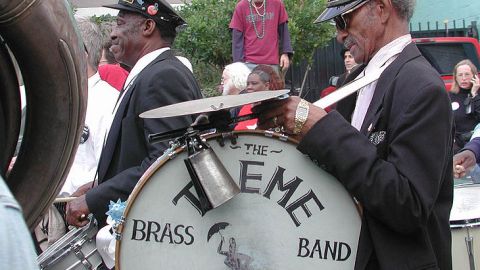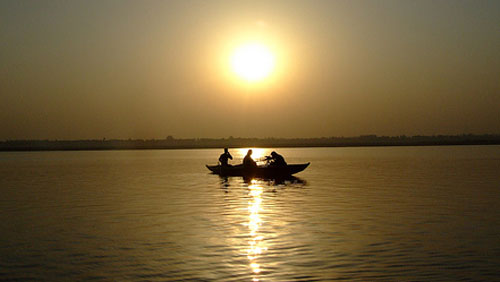I See Myself In Black And White On “Treme”

After watching a few episodes of the new HBO show Treme, I have discovered that even though I am African American, I seem to have more in common with Creighton Bernette, the white college professor and burgeoning political activist John Goodman plays, than I do with many of the black characters who comprise most of the cast. Outside of his day job as an English professor, Creighton is a political activist who rants against the powers that be during NPR interviews and lives with a lawyer. Outside of my day job, I am a former English major and political blogger who rants against the powers that be during NPR interviews and lives with a lawyer.
It actually came to me during the first episode, when Creighton Bernette started getting a little heated during a telephone interview with an NPR radio show, that the familiarity of the scene hit me, probably because I had just done an interview with Sean Yoes on WEAA in Baltimore a few days before. I started to pay closer attention to Creighton’s life than I probably would have otherwise. The way the house is decorated, the glasses of wine he and his wife drink on the porch after dinner, the precocious teenager, his disgust with the lack of truth in the system we live under, the unfinished novel he’s been struggling to finish, his foray into making political statements via Youtube videos—it’s all me, all the way down to the oversized shirts he wears to keep from dealing with his XXXX large waistline.
What makes it even more ironic is the fact that Clarke Peters, who plays Albert Lambreaux, otherwise known as “Big Chief”, bears more of an actual physical resemblance to me. In many instances, he seems to be the Louisiana version of my relatives who populate South Carolina’s Lowcountry area. As an older man who appears to be a master of his trade, Big Chief reminds me of one of my uncles, who at sixty remains physically vibrant and demonstrably proud of his ability to make things that have stopped working work again.
For me, it is this duality that engages me with this program in a way that rarely happens when I watch a television show or movie. As a television viewer, you usually are going to identify with one character in a show. I don’t know if it says more about the show or about me that I am able to enjoy a pleasurable hour of racial schizophrenia, flipping back and forth between the bourgeois perspective of Creighton Burnette and the skilled tradesman viewpoint of Big Chief Lambreaux. Lambreaux is willing to physically and verbally attack anything or anybody that looks like they are going to get in the way of reuniting the Guardians of the Flame, the crew of Mardi Gras Indians he leads. Bernette, while more subversive and introspective, is no less dangerous to himself of others as he pushes back against forces he believes will harm the character of New Orleans.
Making the conscious decision to focus on the Treme section of New Orleans, which is the oldest African American neighborhood in the country, seems to be a big key to the success of the post-Katrina narrative the show revolves around. Instead of trading on ghetto stereotypes, or portraying flood victims who have no way of helping themselves, the writers and producers appear to have given themselves a larger palette of nuance and emotional resonance to draw from by focusing on the proud and industrious inhabitants of the Treme.
If you need an adrenaline rush when you are watching TV, turn on one of those vampire shows, or watch one of the paranormal series. If you are ready for the slow, lazy simmer of an adult drama that shows how people rebuild their lives after a catastrophe, block out the ten o’clock hour on Sunday nights, pour yourself a glass of wine, and enjoy Treme.





